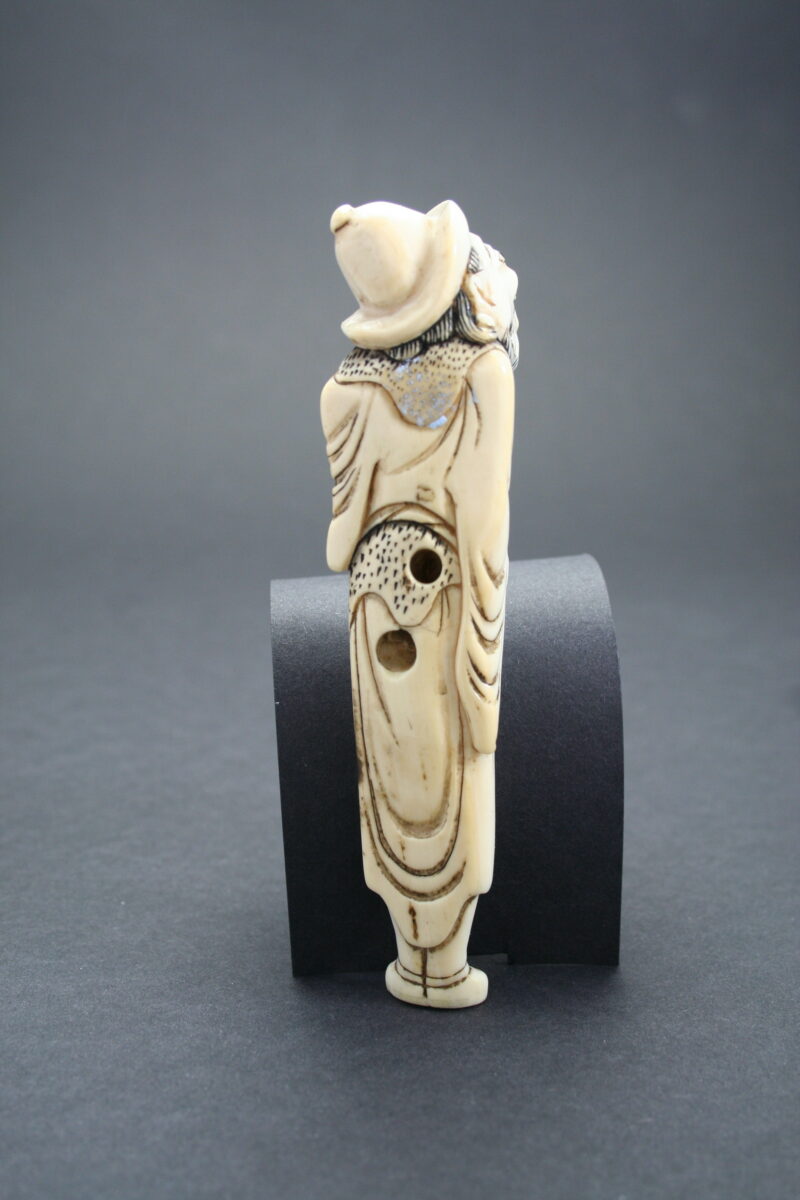- Collection
- Collection database
- Laughing Portuguese
Laughing Portuguese
Information
| Title | Laughing Portuguese |
| Date | c. 1800-1825 |
| Height | 12,2 cm |
| Object number | SH2025-LP-121 |
| iterature references | Jirka-Schmitz, Patrizia. 2005. The World of Netsuke: The Werdelmann Collection at the museum kunst palast Düsseldorf. Stuttgart: ARNOLDSCHE Art Publishers. |
| Credit Line | Collection Japan Museum SieboldHuis, donated by Mrs. E.Y. de Koster and Mrs. G. Zellentin, 2025 |
Description
This laughing Portuguese man is shown with a long black beard and calf-length robes.
At the end of the 16th century, many Portuguese Jesuit missionaries traveled to Japan to convert the population to Christianity. The Japanese government quickly put a stop to their efforts, fearing the spread of Christianity would lead to friction within the country. Eventually, the Portuguese were fully banished, and only the Dutch were allowed to set foot on Japanese soil—confined to the artificial island of Deshima.
As such, few Japanese people had the chance to lay eyes on a foreigner; most had to rely on depictions of foreigners from the early 17th century. These often portrayed Jesuits in their black cassocks, which this Portuguese man’s long robe calls to mind.
For further information on the representation of foreigners in carvings, see our collection story: Hollanders in Japanse snijkunst.
The figure’s eyes and the two buttons on his robe are inlaid with soft coral.
A similar figure in an identical pose from the Werdelmann Collection is described in Jirka-Schmitz (2005, nr. 28, p. 24).



